
James Martin/CNET
Apple on Tuesday introduced its newest iPhones and its first wearable, the Apple Watch. The new devices have gotten all of the buzz, but many analysts say Apple Pay, the company’s new mobile-payments service, could be the real game changer.
They also largely applauded the new devices and said they could drive Apple’s biggest year ever.
The Cupertino, Calif., company on Tuesday introduced the iPhone 6 and iPhone 6 Plus , its new, bigger screen smartphones. The iPhone 6 sports a 4.7-inch display, up from the 4-inch screen in the iPhone 5S. The 6 Plus includes a 5.5-inch display, putting it firmly in the category of phablet, or phone-tablet hybrid.
The company also made its first jump into the hot smartwatch market by showing off three designs for its first wearable — the stainless-steel-cased Apple Watch, the aluminum-cased Apple Watch Sport, and the 18-karat-gold-cased Apple Watch Edition. The smartwatches go on sale early next year at a starting price of $349. The devices must be paired with an iPhone, and are compatible with the iPhone 5 , 5C, 5S, 6, and 6 Plus.
After years of speculation, the company also said it was finally including the short-range wireless technology known as near-field communications or NFC into its Apple Watch and iPhone 6 and 6 Plus smartphones. It also announced a new digital wallet called Apple Pay , which can be accessed securely using its fingerprint Touch ID technology. The service allows users to store their credit card accounts on their Apple devices and pay for items by tapping the phone or watch to a sales terminal.
Here’s what some analysts thought about the announcements:
Apple Pay could be a game changer
Apple Pay may not have been the sexiest announcement on Tuesday, but many analysts believe it could be the most important.
See also
- CNET’s first thoughts on the Apple Watch
- With its debut smartwatch, Apple aims to make wearables fashionable
- Apple jumps into wearable fray with Apple Watch smartwatch
- iPhone 6, iPhone 6 Plus, Apple Pay, and the Apple Watch: Here’s everything Apple just announced
- With new smartwatch, Apple buys itself some time
Apple announced Tuesday it’s partnering with Visa, MasterCard, and American Express along with several issuing banks to allow iPhone users to store their credit card accounts. Apple Pay will be available in 220,000 US merchant locations that already take mobile payments via the NFC’s short range, secure wireless capabilities.
The company also has an online tie-in that allows users to pay for online items quickly using TouchID. Apple Pay application programming interfaces (APIs) will be available to developers in iOS 8 so they can enable purchasing physical goods within their apps on the iPhone 6 and iPhone 6 Plus.
PiperJaffray analyst Gene Munster called Apple Pay “potentially the most important Internet service introduced by Apple since iTunes.”
“Overall, we view the offering as significantly more built out than we previously expected in terms of the quality and number of partners as well as the level of integration into the iPhone,” he noted. “In the near-term, we believe the more obvious impact of Apple Pay is to drive incremental hardware sales in the iPhone 6. Longer-term, we believe that Apple intends to find specific ways to monetize each payment transaction on platform, which could be achieved through various efficiencies in the system.”
Gilles Ubaghs, senior analyst of financial services technology at research firm Ovum, said Apple’s entrance into payments “marks a milestone in payments regardless of the eventual outcome of its new services.” But he did say it’s likely to remain “niche at the point of sale for some time as overall device penetration remains relatively low and the service remains US only.”
“More critically the in-store experience provides little major incentive for use at this point, and while Apple benefits from its iTunes membership, the lack of tie in to loyalty or other features may at least initially limit consumer interest beyond early adopters,” Ubaghs said.
Apple iPhone 6 and 6 Plus expand Apple’s target market
The iPhone is Apple’s most important gadget and its biggest moneymaker, accounting for more than half of sales and about 70 percent of profit, according to analysts. For the past three years, Apple CEO Tim Cook has unveiled the new design in the fall, and last year, he introduced two new iPhone models for the first time — the pricey 5S and the colorful, plastic-encased 5C. He continued that trend on Tuesday, showing off two new iPhones, the iPhone 6 and iPhone 6 Plus.
The Apple iPhone 6 and iPhone 6 Plus have arrived (pictures)


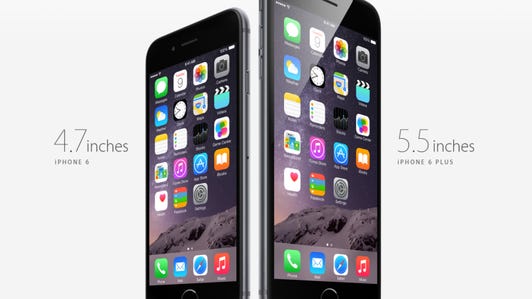

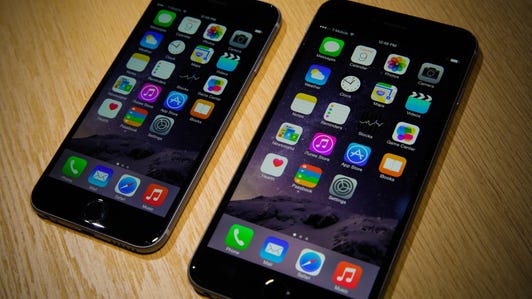

+19 more
Along with the bigger screens, the new iPhones also feature a new chip, the A8 microprocessor, which is 50 percent more power efficient than the chips in last year’s devices. That, and a larger size for bigger batteries, allows the iPhone 6 to play music for 50 continuous hours, while the iPhone 6 Plus can run for 80. Talk time is 14 hours and 24 hours respectively.
The iPhone 6 goes on sale September 19 in 115 countries starting at $199 with for a version with 16 gigabytes of storage space. The iPhone 6 Plus starts at $299 for its 16GB version, $100 more. In the UK, an unlocked iPhone 6 will start at £539, and the iPhone 6 Plus will start at £619. Notably, China isn’t one of the countries including in the initial rollout, which could indicate supply issues, analysts said.
Cantor Fitzgerald analyst Brian White said “Apple outdid itself with the introduction of the iPhone 6.”
“After the event, we had the opportunity to take both new iPhones for a test drive, and there is simply no comparison with the iPhone 5s,” he said. “Once we got use to the 4.7-inch and 5.5-inch screen sizes, we found the 4-inch iPhone 5S was simply too small for us, and we doubt we will be alone in this regard.”
Jan Dawson of Jackdaw Research said Apple’s “new phones should dramatically expand the size of the opportunity for the iPhone, which has been artificially limited by its small screen size.”
“The iPhone will now definitely have its largest quarter ever in Q4 this year, and its biggest year,” he said. “It will significantly move the needle on shipments, and will further dent Samsung’s shipments in the coming months.”
Apple Watch is innovative but may be too pricey and limited to attract hordes of buyers
Cook, introducing the Apple Watch before more than 2,000 people, called the smartwatch a “breakthrough” product. He described it as a “comprehensive” health and fitness device, walkie-talkie, and remote control for the Apple TV streaming-box. Those factors alone set the Apple Watch apart from other smartwatches on the market, which tend to simply track steps, provide notifications, and run very basic apps.
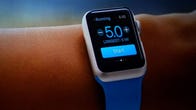

Now playing:
Watch this:
Apple Watch brings iPhone functionality to your wrist
5:00
But Apple went even further — creating what Morgan Stanley analyst Katy Huberty called a “Swiss Army Knife” sort of wearable. It included a near-field communications, or NFC, chip in the watch to enable mobile payments. It put a haptic feedback engine in the device so that it vibrates when receiving an alert or a being given a direction in programs like Maps. Apple included a digital touch feature to allow two people to communicate quickly through taps, drawings, and by sharing their heartbeats.
Bernstein analyst Toni Sacconaghi noted the Apple Watch’s positioning “is more up-market than we had expected.” And it only works with the iPhone 5 and newer devices, which could limit the addressable market.
“While the device is aesthetically attractive, and has a very innovative [user interface]…we struggle with the fact that the majority of the Watch’s functionality is dependent on the presence of an iPhone,” he said. Sacconaghi added that his earlier estimate that Apple would sell at least 30 million watches in their first year on the market “now appears optimistic.”
Deutsche Bank analyst Sherri Scribner, meanwhile, said the Apple Watch’s features “were better than we had anticipated.” Scribner estimates the Watch could be “a significant new category for Apple, with a potential revenue opportunity” of $15 billion to $60 billion.
“The physical design of the Watch was impressively beautiful, and it’s clearly positioned as a status object,” Scribner said. “But the more revolutionary aspect of the Watch in our view was the interface, which is specifically tailored to a small device.”
Apple Watch keeps up with the times (pictures)


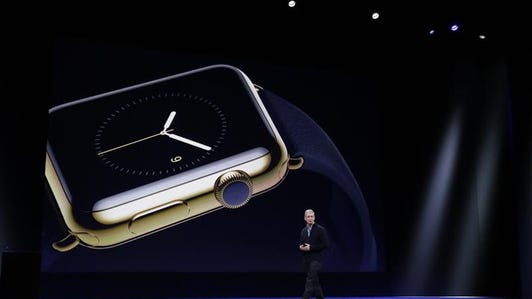

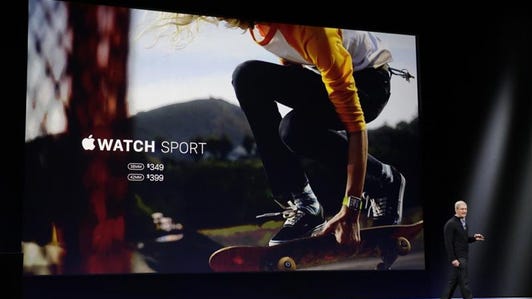

+40 more



